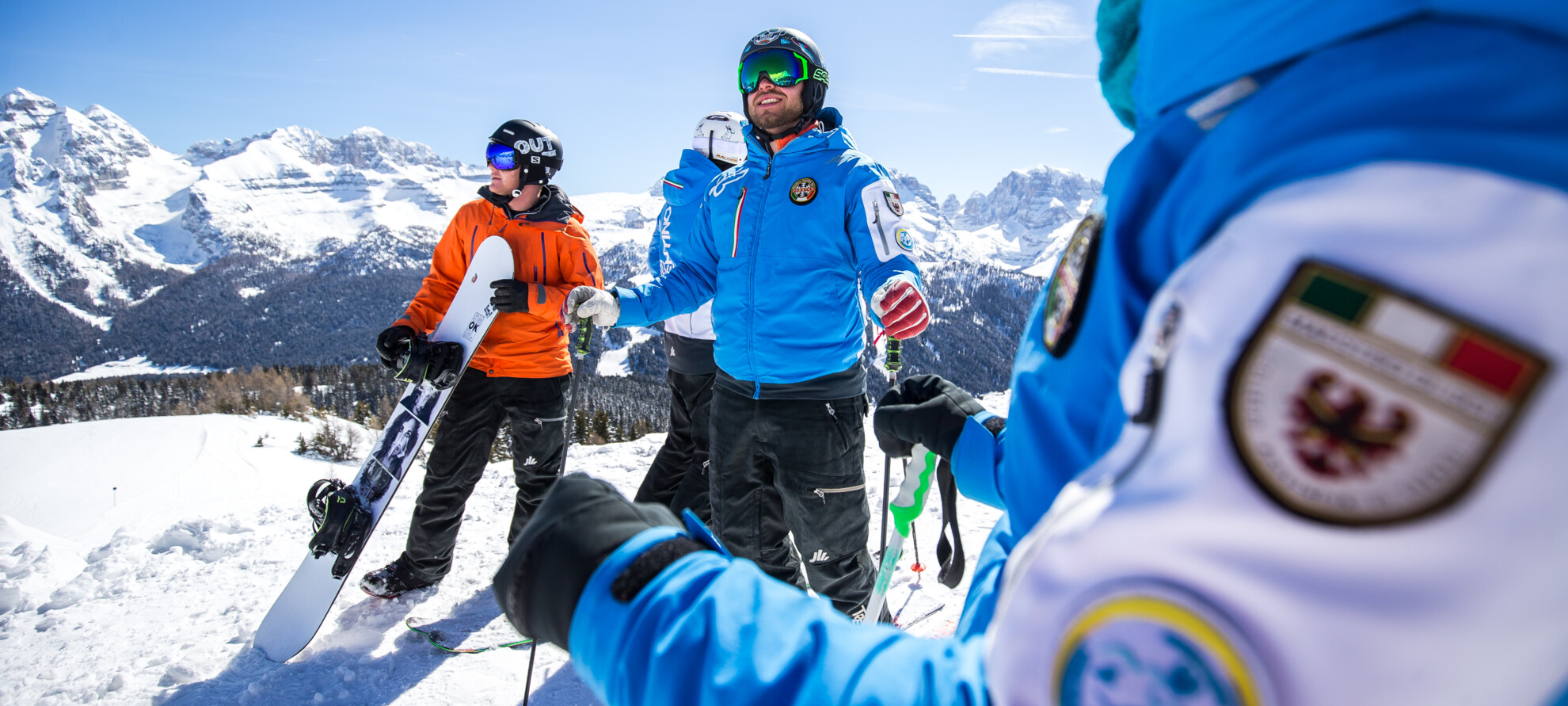10 rules of conduct on the ski slopes
Enjoy carefree days on the slopes. Always prioritise prudence!
If you are a skier or snowboarder, you probably already know the rules to be followed on the slopes – rules of conduct that allow you to practice these sports with caution and respect for other skiers.
How about a quick brush up?
1. Always wear your helmet
Starting in the 2025/2026 winter season, helmets will be mandatory on the slopes for all winter sports enthusiasts, regardless of age, such as skiing, snowboarding, telemark skiing, freestyle skiing, and sledding.
2. Respect signs and markings
Skiers must be familiar with and respect the rules of conduct and all signs and markings on the piste.
3. Behaviour on the pistes
Always behave in a manner suited to your personal ability so as not to endanger or prejudice yourself or others.
4. Speed
Remember to adapt your speed and manner of skiing to your personal ability, to the piste signs, safety requirements and conditions, and to special weather conditions, such as fog, haze, poor visibility, etc. Pay particular attention to areas with limited visibility, crowded pistes, obstacles, junctions, forks, narrow passages and beginners.
5. Right of way and trajectories
Maintain a direction such as to avoid collisions or interference with skiers further down the piste, and always give right of way to rescue and emergency vehicles on the piste. Also, when entering or crossing a piste, ensure you look up and down the slopes so as to do so without endangering yourself or others.
6. Overtaking
Before overtaking another skier, ensure you have enough space and visibility. Overtaking may take place above or below and to the right or to the left of another skier, provided the latter has enough space to make any voluntary or involuntary movement.
When overtaking, it is advisable not to turn along the side of the piste and to always leave enough space to facilitate overtaking.
7. Enter and cross carefully
At a junction, before entering a piste or when crossing a beginner area, reduce your speed and ensure you look up and down the slopes so as to do so without endangering yourself or others. The same applies after every stop.
8. Stopping
When stopping, always keep to the side of the piste. Never stop in narrow places, near bumps or where visibility is restricted. Skis should be placed outside the ski area. In the event of a fall, clear the piste promptly and move to the side to avoid colliding with other skiers behind you.
9. Duty to rescue and assist
You are duty bound to assist any person who is injured or in difficulty and to report the accident promptly to the emergency number 112 or to the piste’s emergency service. Moreover, if you are involved in or witnessed the accident, you will need to provide your details to the rescue personnel.
10. Walking and snowshoeing
It is forbidden to walk or use snowshoes on the ski slopes, except in cases of urgent need. When descending without skis, always keep to the side of the slope.
Also remember…
Insurance
It is mandatory to have insurance covering civil liability for damages or accidents caused to third parties.
Impaired state
Remember that it is forbidden to ski in impaired psychophysical conditions.
Black pistes
Before skiing on a slope with a high degree of difficulty (black piste), ensure your physical fitness and technical skills are adequate.
Skiers with disabilities
Always give way to disabled skiers on the piste and when accessing the ski lifts. Moreover, ensure they have enough space and look out for their route and trajectory. For ease of detection, skiers with disabilities shall wear an orange bib and be assisted by a “GUIDE” (Italian “GUIDA”).

